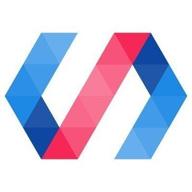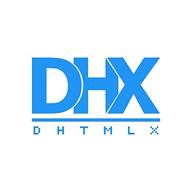Component Libraries
Component Libraries: Empowering Modern Web and Mobile Development
In today's rapidly evolving digital landscape, businesses are constantly seeking efficient and effective solutions for web and mobile app development. Component libraries have emerged as invaluable resources, providing developers with pre-built, reusable UI components that streamline the development process. This article explores the significance of component libraries in cross-platform mobile app development, the advantages of Material UI component libraries in creating modern web interfaces, and the benefits of utilizing React component libraries specifically tailored for e-commerce websites.
Cross-Platform Mobile App Development: Harnessing Component Libraries
The demand for cross-platform mobile apps has skyrocketed as businesses aim to reach a wider audience across multiple platforms. Component libraries play a pivotal role in this domain by offering a comprehensive set of ready-made UI components that can be seamlessly integrated into various mobile app frameworks. These libraries provide developers with consistent design patterns, optimized performance, and enhanced productivity. By utilizing component libraries for cross-platform mobile app development, developers can significantly reduce development time, minimize code duplication, and ensure a cohesive user experience across different platforms.
Creating Modern Web Interfaces with Material UI Component Libraries
The visual appeal and user experience of modern web interfaces are vital to the success of any online business. Material UI component libraries have gained immense popularity due to their ability to create sleek, responsive, and intuitive web interfaces. Based on Google's Material Design principles, these libraries offer a wide range of pre-designed components, including buttons, forms, navigation elements, and more. By leveraging Material UI component libraries, developers can rapidly build visually stunning and user-friendly web applications while adhering to industry best practices for design consistency.
Enhancing E-commerce Websites with React Component Libraries
E-commerce websites require a dynamic and robust frontend that can handle complex user interactions and seamlessly integrate with back-end systems. React component libraries specifically tailored for e-commerce websites provide developers with a wealth of pre-built components optimized for online retail experiences. These libraries offer features such as shopping carts, product listings, user authentication, and payment gateways, empowering developers to accelerate the development process while ensuring a smooth and engaging shopping experience for customers. With React component libraries for e-commerce, businesses can swiftly create and iterate upon their online stores, gaining a competitive edge in the ever-evolving e-commerce landscape.
Conclusion
Component libraries have revolutionized web and mobile app development by offering developers a vast collection of reusable UI components. For cross-platform mobile app development, component libraries streamline the development process and ensure consistent user experiences across platforms. Material UI component libraries enable developers to create modern, visually appealing web interfaces while adhering to industry design standards. React component libraries designed for e-commerce websites empower businesses to swiftly build feature-rich online stores. By leveraging these component libraries, developers can boost productivity, improve development speed, and deliver exceptional user experiences in today's competitive digital landscape.


2 Review
Polymer is an open-source JavaScript library for building web applications using Web Components.

2 Review
React-Bootstrap replaces the Bootstrap JavaScript. Each component has been built from scratch as a true React component, without unneeded dependencies like jQuery.


2 Review
DevExpress ships feature-complete UI controls, enterprise-ready reporting systems, automated web testing tools and business application frameworks. Our technologies help you build your best, see complex software with greater clarity, increase your productivity and create stunning touch-enabled applications for Windows, Web and next generation Mobile…
Read more about this company

2 Review
Belle provides you with a set of React components like Toggle, ComboBox, Rating, TextInput, Button, Card, Select and soon many more.

2 Review
Onsen UI for Angular exposes a simple but powerful API. All UI components can be easily plugged into your Angular mobile app.


2 Review
PrimeNG is a collection of rich UI components for Angular. All widgets are open source and free to use under MIT License. PrimeNG is developed by PrimeTek Informatics, a vendor with years of expertise in developing open source UI solutions.

2 Review
Formidable Victory is an open source tool that provides React.js components for modular charting and data visualization.


2 Review
TRichView is a suite of components for editing rich text documents. For Delphi, C++Builder, and Lazarus. We also offer the following add-ons to TRichView. ScaleRichView provides WYSIWYG editing of rich text documents. ScaleRichView editor is based on TRichView engine and supports almost all features of TRichView documents. Report Workshop allows…
Read more about this company
2 Review
Flutter allows you to build beautiful native apps on iOS and Android from a single codebase.


2 Review
Bunifu Framework helps software developers and companies globally create modern, stunning software interfaces and user experience The product supports WinForms for C# and VB.NET developers. The features are carefully crafted with the developer in mind to provide speed and simplicity. All these at an affordable cost.



2 Review
pandas is an open source, BSD-licensed library providing high-performance, easy-to-use data structures and data analysis tools for the Python programming language.

2 Review
Material-UI is a set of React components that implement Google's Material Design specification.


2 Review
DHTMLX delivers multifunctional JavaScript libraries and UI widgets for developing modern enterprise and B2B web applications of any scale from scratch. Using these out-of-the-box components, web developers can boost their coding productivity by implementing even advanced functionalities with minimum time and effort. The current DHTMLX product line…
Read more about this company

2 Review
For enterprises building complex mobile Apps, Onymos Fabric is a suite of Trusted building block Components that enable your developers to their app to market faster and delight their users.


2 Review
Angular2 building blocks based on Semantic UI, Angular 2 angular.io, Semantic UI semantic-ui.com, GitHub repository


2 Review
Mako is a template library written in Python. It provides a familiar, non-XML syntax which compiles into Python modules for maximum performance. Mako's syntax and API borrows from the best ideas of many others, including Django and Jinja2 templates, Cheetah, Myghty, and Genshi. Conceptually, Mako is an embedded Python (i.e. Python Server Page) language…
Read more about this company
2 Review
- Component libraries are collections of pre-built, reusable user interface (UI) components that developers can utilize in their software projects. These libraries provide a set of ready-made components, such as buttons, forms, menus, and more, that follow consistent design patterns and can be easily integrated into applications.
- Using component libraries offers several advantages. First, they promote code reusability, saving development time and effort. Developers can leverage existing components rather than building them from scratch. Second, component libraries provide design consistency across projects, ensuring a cohesive and professional look and feel. Additionally, these libraries often come with built-in functionality and accessibility features, enhancing the overall user experience.
- Component libraries are available for various programming languages and frameworks. The availability depends on the specific library, but popular languages like JavaScript, TypeScript, and CSS are widely supported. Frameworks such as React, Angular, and Vue.js have thriving ecosystems with numerous component libraries tailored for their respective ecosystems.
- Yes, most component libraries allow customization to meet specific project requirements. Developers can typically modify the appearance, behavior, and styling of components to align with their application's branding and design guidelines. Customization options may include adjusting colors, typography, layouts, and adding or removing functionality.

